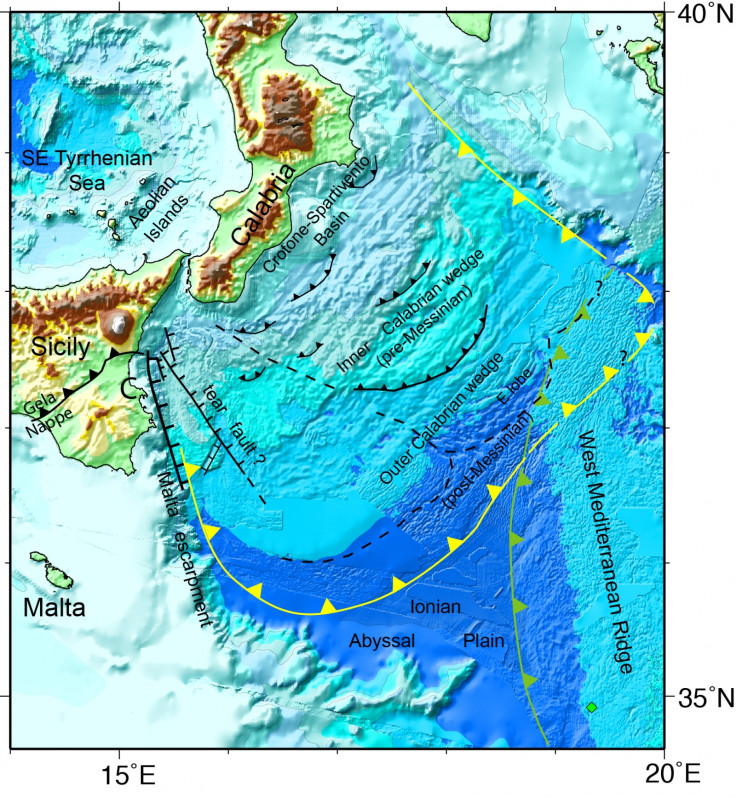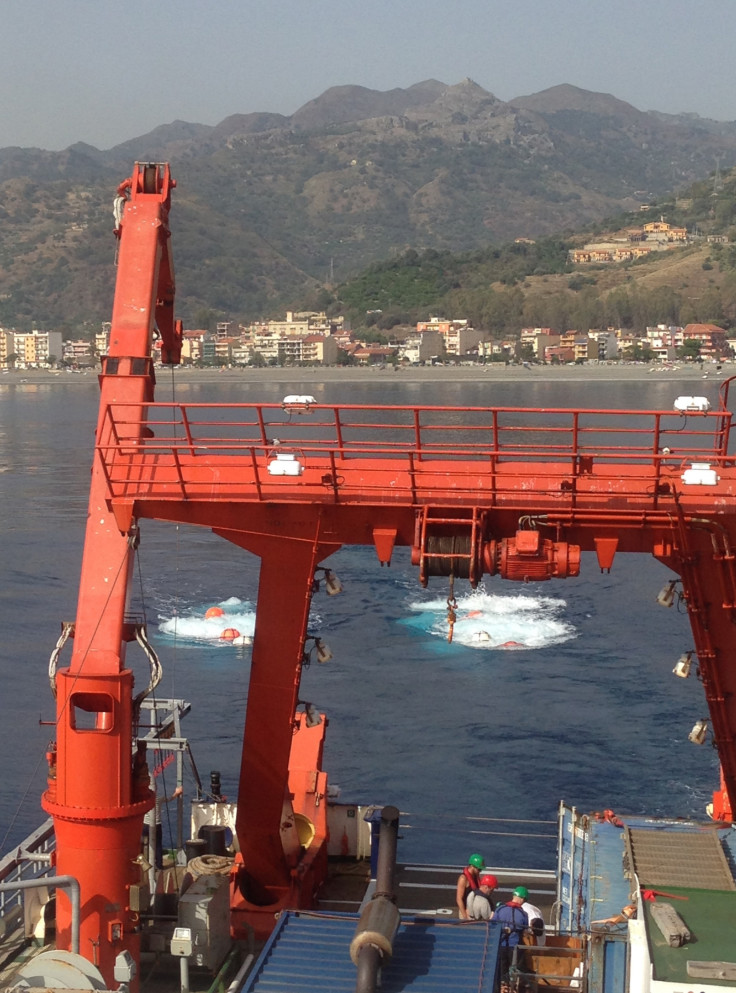Newly discovered activity in the tectonic fault off the coast of Italy points to earthquake risk
It was not known previously whether or not the fault was capable of generating future earthquakes.

A new, detailed map of the sea floor off the coast of Calabria and Sicily in Italy has shown tectonic activity where the Eurasian and African tectonic plates meet. There are many fault zones in this region, and it is not currently clear how many of them are active.
The discovery of a new active fault area would be used as a factor in estimating the likelihood of earthquakes in the region.
"These studies are important because they give us an idea of where there is increased hazard of earthquakes occurring," study author Heidrun Kopp of the Geomar Helmholtz Centre for Ocean Research Kiel in Germany, told IBTimes UK.
"It's difficult because we weren't sure if plates in that area were still actively moving. It is moving but at a very slow rate so the motion is very difficult to pick up," she said. "We knew that the plate boundary was there but it was not clear if it was active or not – so whether it is able or likely to generate quakes in future."
The researchers found that plate boundary appears to be active where the boundary of the African and Eurasian plates runs past the south of Calabria from Sicily along to Greece.
"We could see evidence for active deformation. The fault in itself is still active and able to generate earthquakes," she said.
The south of Italy is prone to earthquakes and volcanic eruptions, and it is thought that activity at this fault may have been linked to the large Messina earthquake on 28 December 1908. This event was killed more than 80,000 people.

The regions off the coasts of Calabria and Sicily were mapped in unprecedented detail on six missions to the area using a German research ship. Mapping the fault can go some way toward helping researchers understand the likelihood of a similar earthquake occurring.
"However, it's not possible to say exactly when an earthquake will occur or when it will occur. We don't know the exact location and know the timing nor the magnitude, simply because earthquake prediction is not possible yet," Kopp said.
The research is published in the journal Earth and Planetary Science Letters.

© Copyright IBTimes 2024. All rights reserved.







